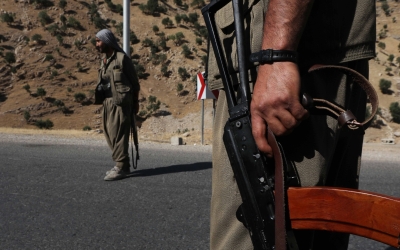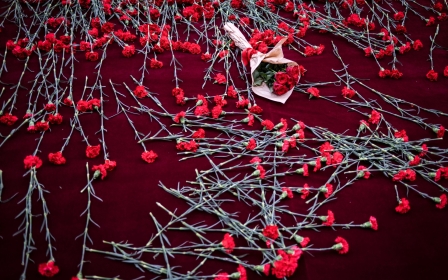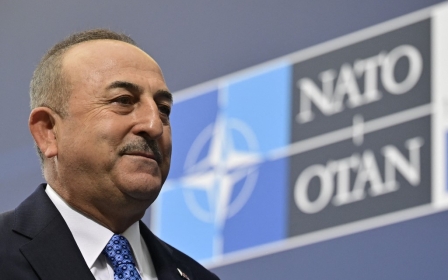Iraq-Syria: Helicopter crash might have revealed a secret PKK air route

Two civilian helicopters that crashed last week in Iraqi Kurdistan’s Duhok region may have exposed a secret air corridor to transport senior members of the Kurdistan Workers’ Party (PKK) between Iraq and Syria, Turkish sources told Middle East Eye.
Kurdistan Regional Government officials said that the choppers which went down on Wednesday were carrying PKK members, but didn’t elaborate on the specifics of the flights.
The Syrian Democratic Forces (SDF), spearheaded by PKK-linked groups, said last week that nine of its members died in the Eurocopter AS350 helicopter crash.
The sources added that such flights could only happen with the knowledge of the US government since US forces control the Syrian and Iraqi territory
The counter-Islamic State, US-backed SDF said it was transferring its counter-terrorism units to the Kurdistan region of Iraq in order to enhance its combat and security capacity to better fight against IS militants in Syria.
"While the two helicopters carrying our group of fighters were on their way to al-Sulaymaniyah city on the evening of March 15th 2023, they crashed due to bad weather conditions, leading to the martyrdom of nine of our fighters, including the commander of the forces Shervan Kobani,” the statement said.
The statement didn’t reveal who owns the helicopters or how they were able to use them, since neither the PKK nor the SDF have any aircraft.
Kurdistan Regional Government Prime Minister Masrour Barzani said the helicopters belonged to his political rivals Patriotic Union of Kurdistan (PUK), which has closer relations with the PKK. However, Turkish sources alleged that the helicopters, in total four units, were rented through a local company by the US government and then were given to the PUK.
Kurdistan officials refused to respond to an MEE inquiry into these allegations, stating that investigations into the crash were still underway.
Suspected US role
Tensions have been high recently between the KRG’s ruling parties over the parliamentary elections and oil income. PUK officials - including Deputy Prime Minister Qubad Talabani - have been boycotting the KRG weekly meetings.
Turkish sources said that while the Turkish government was able to track both aircraft's movements in Iraqi airspace, they didn’t have the passenger manifests. The sources added that such flights could only happen with the knowledge of the US government since US forces control the Syrian and Iraqi territory.
“These flights have been continuing for the past two years but they were unregistered,” one of the sources said. “Unregistered flights trigger speculations that PKK terrorists have been illegally transported between Iraqi and Syrian territories with US and Iraqi coordination.”
The air route of the helicopter also raised eyebrows in Ankara, as they used an irregular flight plan to reach Sulaymaniyah from SDF-controlled Hasakah, possibly to avoid Turkish radars and detection for covert meetings.
Al Monitor reported that the helicopters were flying at unusually low altitude, which may indicate a secret pit stop on the way to the final destination such as Gara, which is closer to the PKK headquarters in Qandil.
The Iraqi Kurdistan Region Security Council said the helicopters were flying between Sulaymaniyah and north-east Syria without notifying the formal security establishments of the Kurdistan Region.
The Turkish sources said the KRG and Iraqi authorities must reveal the alleged PUK connection to the flights as their state responsibility.
The sources added that PUK had been deepening its relations with YPG in recent years, and that they frequently engage with each other.
The sources alleged that PUK leader Bafel Talabani met PKK’s Syrian armed wing YPG officials in Sulaymaniyah a few times thanks to arrangements made by the US.
Talabani has so far been silent concerning the Barzani accusations about the ownership of the helicopters. Talabani only released a message of condolences, where he praised the SDF counter-terrorism forces for their campaign against IS, which “guarded the Kurdish holy land from terrorism, and left a legacy of great sovereignty”.
Middle East Eye propose une couverture et une analyse indépendantes et incomparables du Moyen-Orient, de l’Afrique du Nord et d’autres régions du monde. Pour en savoir plus sur la reprise de ce contenu et les frais qui s’appliquent, veuillez remplir ce formulaire [en anglais]. Pour en savoir plus sur MEE, cliquez ici [en anglais].





